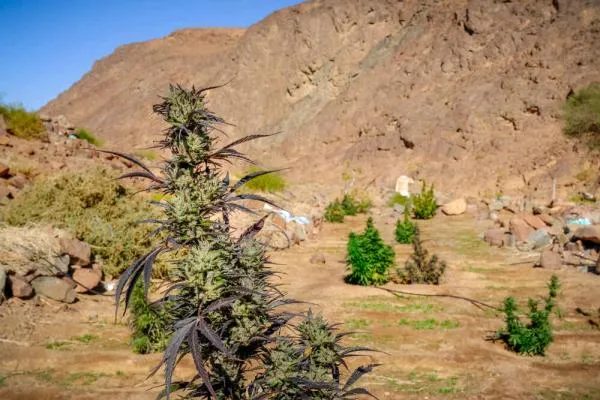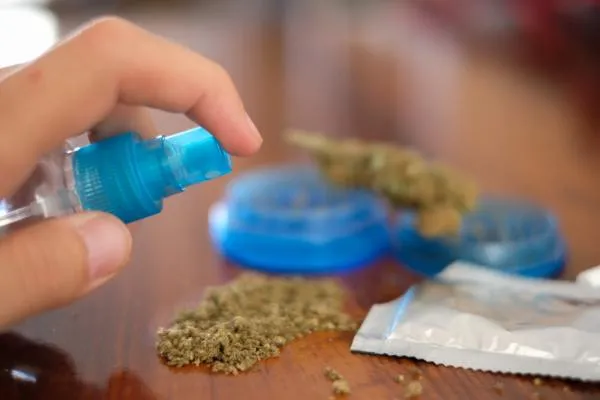Revegging cannabis plants might sound like some secret grower hack, but it’s actually a clever technique to get a second shot at growing from the same plant after harvesting. Whether you’re looking to save time, preserve a strain, or experiment, revegging could be your new favorite trick. Let’s walk through everything you need to know to do it right.
Understanding re-vegetation in cannabis cultivation
Re-vegging, short for re-vegetation, is a process where a harvested cannabis plant is encouraged to grow again by reverting it from the flowering stage back to the vegetative stage. It’s like giving your plant a second chance at life.
What is re-vegetation?
Re-vegetation is when you take a cannabis plant that has already been harvested and use light and nutrient adjustments to push it back into the vegetative stage. Essentially, you're rewiring its growth cycle to produce new buds.
Benefits of re-vegetating cannabis plants
Re-vegging comes with some major perks:
- Cost savings: No need for new seeds or clones.
- Preservation of genetics: Keep the traits of your favorite strain alive.
- Time efficiency: Skip the seedling phase and speed up your next harvest.
Challenges and considerations
Re-vegging isn’t without its quirks. It can stress the plant, causing unusual growth patterns, and not every strain responds well. Plus, it takes some patience—it’s not an overnight miracle.
Methods of re-vegetating cannabis plants

Post-Harvest Re-Vegetation: Leave some healthy lower branches and buds on the plant after harvest. These remnants become the base for new growth when switched back to a vegetative light cycle.
Monster Cropping: Clone a flowering plant instead of a vegetative one. The clones naturally revert to the vegetative stage, producing bushy plants with plenty of bud sites.
Step-by-step guide to re-vegetating after harvest
Preparing the plant for re-vegetation
Start by leaving some lower branches and leaves intact during harvest. These act as the base for new growth. Prune away dead or damaged material to give your plant the best chance of bouncing back.
Adjusting light cycles
Switch to an 18/6 light cycle (18 hours of light, 6 hours of darkness) to signal the plant it’s time to grow again. More light means more energy for re-vegetation.
Nutrient management during re-vegetation
Use a high-nitrogen fertilizer to encourage leafy growth. This is the opposite of the low-nitrogen, high-phosphorus diet plants need during flowering.
Monitoring plant health and growth
Keep an eye out for new shoots and leaves—this means your plant is successfully re-vegging. Stay patient, as this process can take a few weeks.
Common issues and troubleshooting in re-vegetation

Identifying and addressing stress responses
Stressed plants might droop, yellow, or show stunted growth. Fix this by tweaking your environment—dial in temperature, humidity, and light intensity.
Managing unusual growth patterns
Re-vegging can lead to odd growth like single-bladed leaves. Don’t panic—this is normal and will correct itself over time.
Preventing hermaphroditism
Stress can cause plants to develop both male and female traits. Keep conditions consistent and avoid over-pruning to prevent this.
Enhancing success rates in re-vegetation
Selecting suitable strains for re-vegetation
Not all strains re-veg well. Indicas and hybrids tend to bounce back better than pure sativas.
Optimizing environmental conditions
Keep the temperature around 70–85°F and humidity at 50–70%. A stable environment reduces stress and encourages growth.
Implementing best practices for plant care
Water consistently but avoid overwatering, as stressed plants are more prone to root issues. Use quality nutrients and keep pests in check.
FAQs:
What is the purpose of re-vegging cannabis plants?
Re-vegging allows growers to reuse a harvested plant to save time, preserve genetics, and potentially increase yields. By reverting the plant to its vegetative state, you can grow new buds without starting from scratch.
How long does the re-vegetation process take?
Re-vegging can take 2–6 weeks, depending on the strain and growing conditions. Be patient as the plant transitions from flowering back to vegetative growth.
Can all cannabis strains be successfully re-vegged?
Not all strains re-veg easily. Indica-dominant and hybrid strains tend to respond better than pure sativas, which may take longer or struggle to adapt.
What are the signs that a plant is successfully re-vegging?
Signs of successful re-vegging include new shoots, single-bladed leaves, and a gradual return to vigorous growth. These indicate the plant is reverting to vegetative growth.
Are there any risks associated with re-vegging cannabis plants?
Re-vegging can stress plants, leading to hermaphroditism or odd growth patterns. Consistent light cycles, proper nutrients, and a stable environment help mitigate these risks.
Revegging weed plants after harvesting is a handy skill that can save you time, money, and effort while letting you enjoy more of your favorite strain. It takes patience and care, but with the right approach, you’ll be reaping the rewards in no time. So, grab your gear, follow these steps, and give your plants a second lease on life. Happy growing!










2 Comments